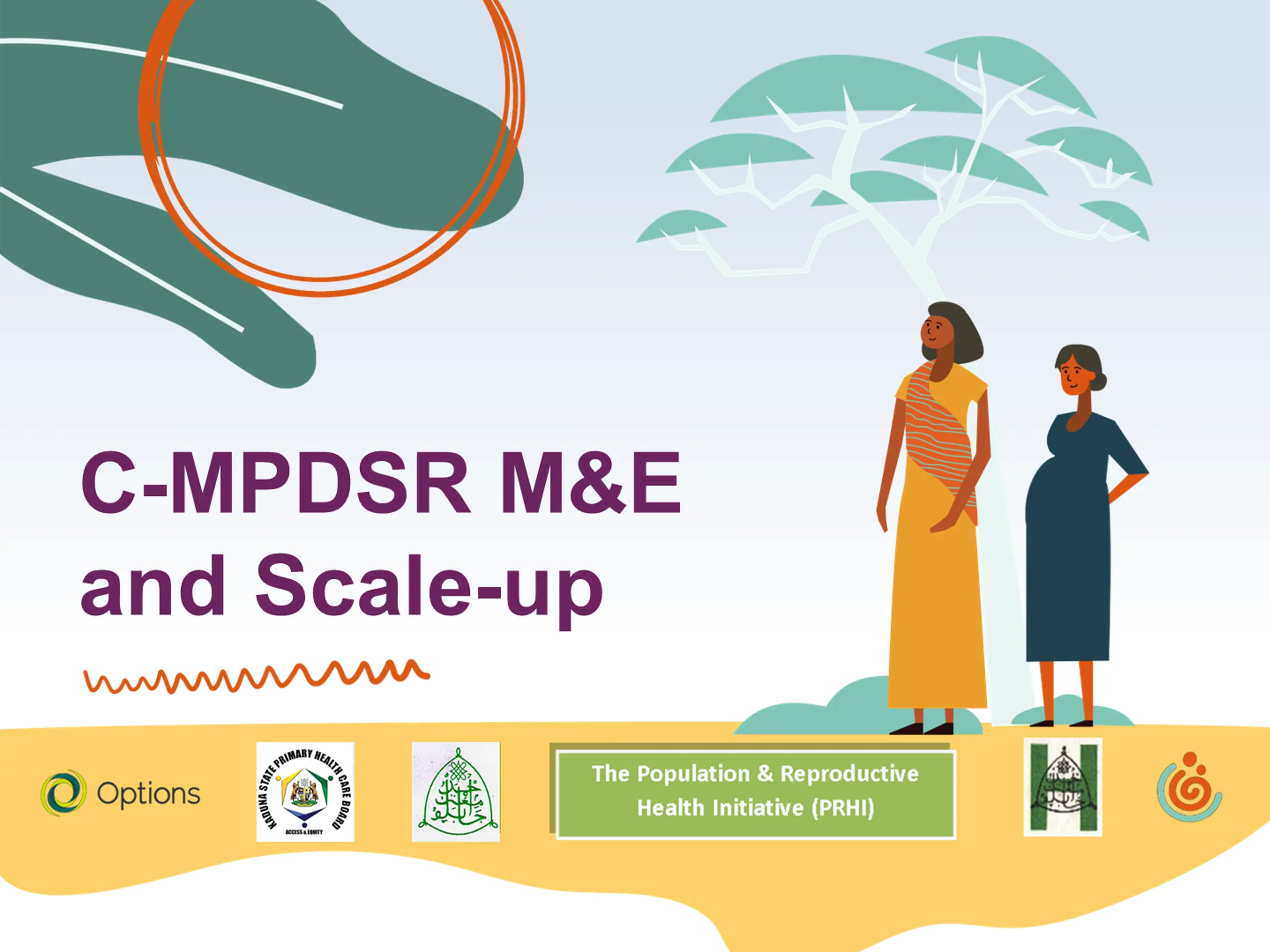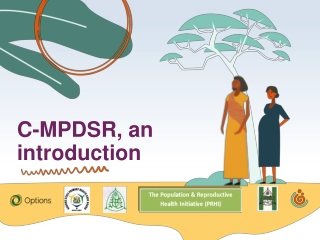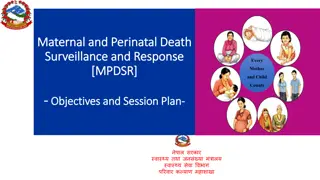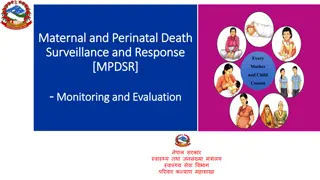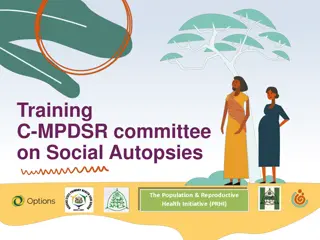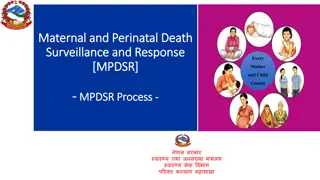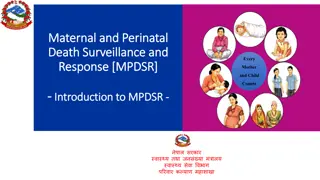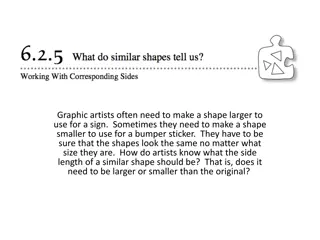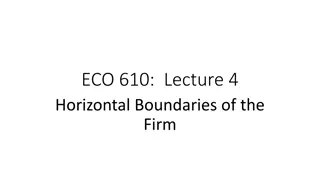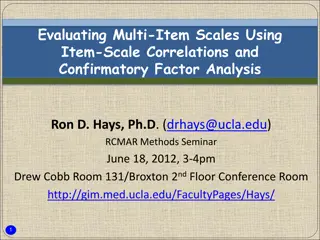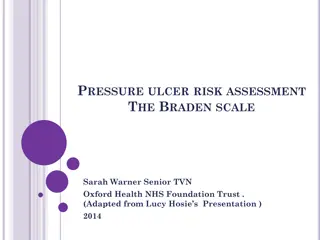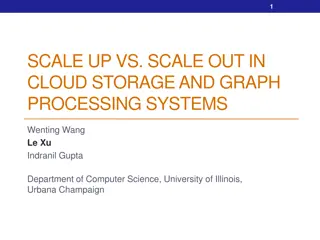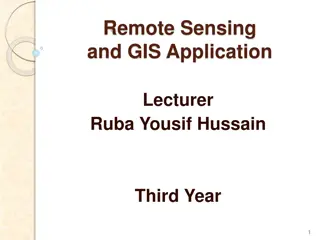C-MPDSR M&E and Scale-up
State stakeholders implementing C-MPDSR who want to monitor progress and scale the project. It includes guidance on baseline assessment, setting up M&E frameworks, theory of change, and practical considerations.
Download Presentation

Please find below an Image/Link to download the presentation.
The content on the website is provided AS IS for your information and personal use only. It may not be sold, licensed, or shared on other websites without obtaining consent from the author.If you encounter any issues during the download, it is possible that the publisher has removed the file from their server.
You are allowed to download the files provided on this website for personal or commercial use, subject to the condition that they are used lawfully. All files are the property of their respective owners.
The content on the website is provided AS IS for your information and personal use only. It may not be sold, licensed, or shared on other websites without obtaining consent from the author.
E N D
Presentation Transcript
C-MPDSR M&E and Scale-up
This module is for State stakeholders who have set up C-MPDSR in their location and want to monitor progress in the implementation of the project State stakeholders who have set up C-MPDSR in a given location and want to scale the model to different geographies
Recap on Baseline Assessment As mentioned in module 1, it is important to hold a Baseline Assessment at the beginning of the project to collect data on the initial situation and conditions that existed before the start of the intervention. Baseline Assessment data will be key to monitor your progress against key indicators over the course of the project. For more information on conducting a baseline assessment, please follow the link on the next slide
Setting up a C-MPDSR M&E Framework When defining the details of a Monitor & Evaluation C-MPDSR plan, there are a few elements to consider. We provide some recommendations for each of these elements: Theory of Change (slide 6) Developing a framework (slide 7) Developing your indicators (slide 8) Practical considerations (slide 9)
Theory of Change The theory of change is an essential tool needed to understand progress, achievement, or failure and to determining efficacy of the intervention It provides a framework for decision-making on how to implement the project. It provides a framework to assess and track changes at different levels of the C-MPDSR project. Here s an example of what a Theory of Change for a C-MPDSR project would look like.
Framework M&E plan is a roadmap that describes how you will monitor and evaluate the C-MPDSR project, as well as how you intend to use evaluation results for improvement and decision making. Monitoring and evaluation plan should be created right in the beginning when the project interventions are being planned. Planning project interventions and designing an M&E strategy should go hand in hand. Once the program s goals and objectives are defined and an outline of an M&E framework is in place, it is time to define indicators for tracking progress towards achieving those goals (see next slide) See the example provided of what a M&E plan for a C-MPDSR project would look like.
Indicators Indicators are important to track progress against the programme s goal and objectives (as stated in the ToC) It is important to map out if there are indicators that are already being tracked at the facility level and make sure the project indicators are aligned with those When setting up the M&E plan, make sure you include a detailed plan of how often this and your indicators should be reviewed Establish roles and responsibilities from the start, defining who is doing the reviews and what participants are involved Below some tips to take into account when developing indicators: Ensure data are collected at least once a month this will allow consistent monitoring and will give you a full picture when analysing the trend across periods Data should be collected from both the DHIS website, at facility level and at community level You should have a mix of both quantitative and qualitative indicators Tracking of Antenatal Care and Deliveries should be covered by the indicators Ensure at least one of the indicator in your M&E plan tracks deaths happening at the health facility level Qualitative indicators should be used to track changes in communities perceptions and behaviours around maternal and new-born health, and more in general women s health Hold periodic reviews to get quality info of community perception of how the project is going Make sure a way of tracking actions being taken from the c-MPDSR committees is included in the plan
Practical considerations Data quality can vary from one place to another and one time to another. If possible, when collecting your data, spend some time to review it in collaboration with those who have compiled it. For instance, when collecting data from health facilities, if there are gaps in their reporting, discuss this with healthcare workers present to see if the gaps can be filled, or they can provide an explanation.. Data security must be upheld. If you are storing personal information (e.g. names, mobile numbers, location) of participants, these must be stored in an encrypted file, with password protection. These files must not be shared with anyone outside of the project team. If you are conducting FGDs, it is important to group people based on similar characteristics e.g. by gender, age, or socio-economic status. This helps people to feel comfortable and more at ease to speak. When collecting quantitative or qualitative data, make sure technological devices are functioning and have sufficient battery though, it is always good to have a back-up. For instance, when conducting a focus group or interview, it is a good idea to also take notes, just in case you later find out the sound quality is poor, or the battery went
Access E4A-MamaYe C-MPDSR Theory of Change Access an example of a C-MPDSR M&E Plan
Cost-effectiveness and sustainability The c-MPDSR model was originally co-designed with the Kaduna State Primary Health Care Development Agency (SPHCDA) with the aim to adapt c-MDPSR in a way that is cost-effective and sustainable from the outset. The project has been informed by ExpandNet s guidance on scaling up1; Project partners (E4A, PHRI, and the SPHCDA) have worked from an agreed checklist of actions (see slide 16) and considerations that inform and track progress towards scaling up. Below some considerations on cost-effective scale-up and sustainability based on E4A-MamaYe s experience Stakeholders engagement and buy-in: Sustainable scale up requires ownership which was fostered through local support when engaging the right people at state-level and ensuring the project is tailored to the context of target geography. Engage all state actors involved in the implementation of the state s MPDSR through (among others) a co-creation event to improve coordination of the state s MPDSR, and the endorsement of state stakeholders of the c-MPDSR model. Bring together LGA officials and community members to seek their buy-in prior to the commencement of the project. Regular partner coordination meetings should be held with all stakeholders in the state to review and update the scalability and sustainability plan. Where required, adaptations are discussed and agreed at this meeting. Systems thinking: Integration of c-MPDSR as part of existing health system processes is essential for the sustainability and cost-effectiveness. Existing complexities of the target geography health systems of interactions should be considered Integration of c-MPDSR in health systems existing systems and processes reduces costs. For example, this can be achieved by adding c- MPDSR autopsy to the roles of selected PHC health workers and Ward Development Committee members, rather than hiring new staff. Integrating health systems thinking into social autopsies. Health system solutions are likely to impact communities beyond those in which the deaths are discussed, enhancing cost-effectiveness of the approach. Efficiency considerations lead to actions to streamline governance processes. For example, following discussions with Kaduna State Commissioner for Health and senior government officials a decision was made to improve MDPSR coordination in the state. It was agreed that the State Primary Health Care Development Agency (SPHCDA) will lead CMPDSR in the state with E4A collaborating with the agency s RMNCH Coordinator.
Scaling up checklist ExpandNet have produced various resources to support the practice of scaling up. E4A reviewed and adapted these to inform a checklist to be completed in collaboration with partners (primarily government) at the baseline, mid-term and endline of the project. Below you can see an excerpt of this checklist. The recommendations and recommended actions are taken directly from ExpandNet. The c-MDPSR commitment was the articulation of how our specific project would apply the recommendations. This was reviewed during the assessments, and where commitments were achieved, a score of 1 was given. We aimed to achieve 75% of the commitments, as indicated in row 2. It is important that you work with your partners (including those involved in a potential scale-up) to adapt the checklist to your project and your own targets. When discussing with partners, we found it helpful to include a column with questions or prompts to help guide the discussion (this column is hidden in the image but available via the link on the previous slide).
C-MPDSR Implementation Pack Evidence for Action (E4A) - MamaYe is a programme led by African experts in Kenya and Nigeria to improve the Maternal and Newborn Health. It is managed by Options Consultancy Services Ltd with funding from the Bill & Melinda Gates Foundation. The findings and conclusions contained within are those of the authors and do not necessarily reflect positions or policies of the Bill & Melinda Gates Foundation. FURTHER INFORMATION This guidance was produced by E4A-MamaYe in collaboration with Kaduna State government and Population and Reproductive Health Initiative (PRHI) to design and implement a sustainable and scalable community Maternal, Perinatal, Death Surveillance & Response (c-MPDSR).
